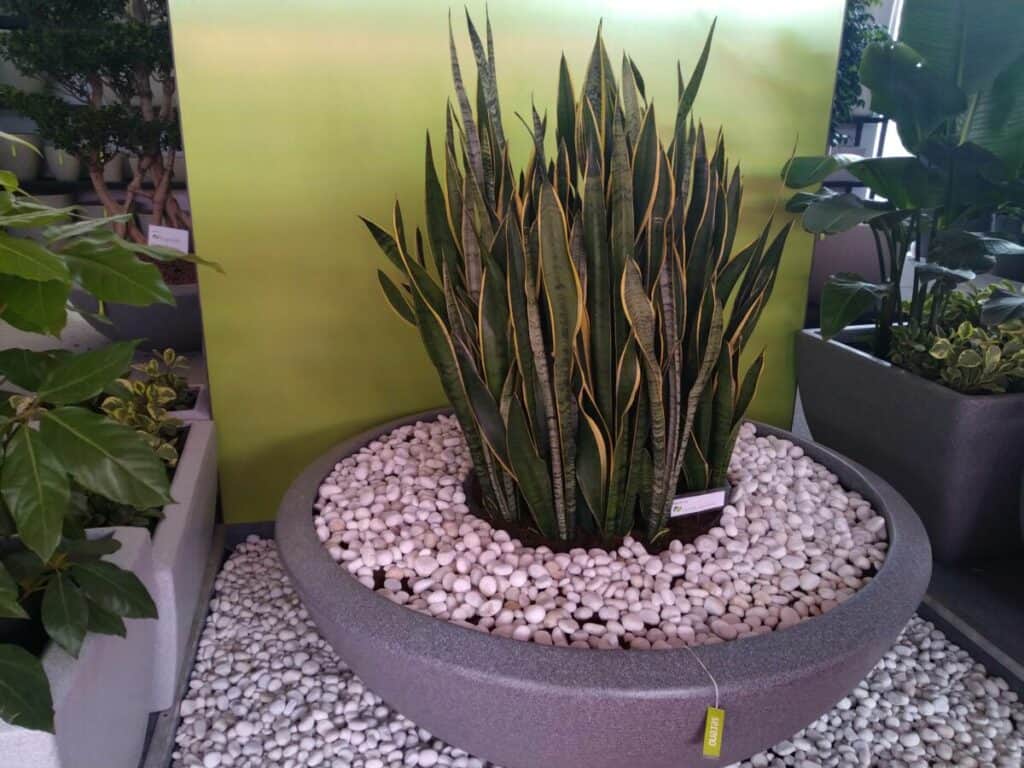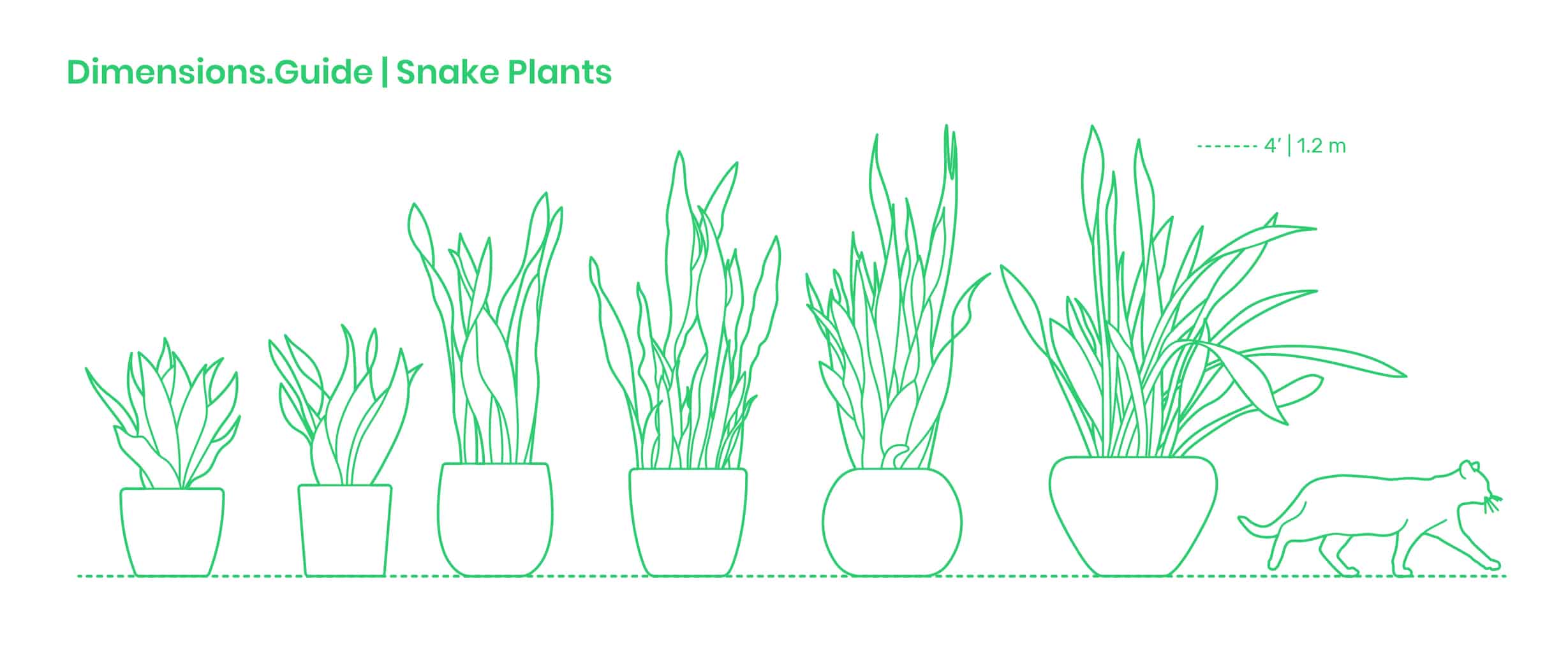You’ve been thinking about growing a snake plant. But you don’t know where to start.
You’re afraid you’ll end up killing the poor plant. But don’t worry.
The snake plant is one of the easiest ones to grow. And it’s not fussy when it comes to things like the soil, heat, and water.
So let’s look at all the information that you need to start growing your own snake plants.
What is a snake plant?
A snake plant is an evergreen perennial plant. It’s also known as Sansevierias or Mother-In-Law’s Tongue.
There are several different varieties available. Some are tall others are short. The leaves could be round, flat, or concave. Their color could be dark green, light green, yellow, or white.
You can grow them indoors, outdoors, or in your balcony. They’re easy to care and have low maintenance.
Why should you grow a snake plant?
The snake plant has a quite unique look with its thick, snake-like leaves. This gives them a beautiful appearance.
They’re quite tough and can grow in conditions with little light, dry air, and less water.
The snake plant does a great job of purifying the oxygen. It can get rid of formaldehyde and nitrogen oxygen. That makes it a good candidate for a houseplant.
What are the different varieties of snake plants?
There are different varieties of snake plants you can choose to grow. They can differ in their size, shape, leaves, and color.
Sansevieria trifasciata ‘Hahnii”
This is also known as the bird’s nest snake plant. It’s named so because it’s leaves form a cluster that looks like a bird’s nest. This plant can grow up to six inches tall.
Sansevieria desertii
This plant is also known as rhino grass. It can grow up to 12 inches in height. It’s a succulent that comes with red-tinted leaves.
Sansevieria trifasciata ‘Bantel’s Sensation’
This plant can grow up to 3 feet tall. It has narrow leaves and white vertical stripes.
Sansevieria trifasciata ‘Twist’
As the name suggests, this plant has twisted leaves with horizontal stripes. It can grow up to 14 inches tall.
Sansevieria trifasciata ‘Laurentii’
This plant has creamy yellow leaf margins. It’s unique because to propagate this snake plant you need to use the division method rather than from leaf cuttings
Sansevieria cylindrica
This plant has round, stiff leaves that can grow several feet in length. The leaves grow outward from a central crown.
What soil is the best to grow a snake plant?
The snake plant is an easy to grow plant that has simple soil requirements. The only need is to have good, well-draining soil.
You can get this with a well-draining potting mix or succulent mix. Don’t try to use garden soil as it won’t have the right texture. It could have pests and diseases. And it could have chemicals as well that could harm the plant.
The only problem that a snake plant could face is root rot if your soil is not draining well.
You can use houseplant fertilizer to provide the right nutrients to the snake plant. This could be a balanced 20-20-20 fertilizer sprayed using a watering container. You can fertilize the plants every spring.
How to water the snake plant?
You should be careful not to water the snake plant too much. This could cause the problem of root rot in the plant.
How much you water depends on the environment where you’re growing the plant. But usually, it could need watering every 2 to 6 weeks. That’s what makes the snake plant good to grow if you travel or tend to ignore plants.
Remember to water the plant only when the soil is dry. Let the pot surface and the soil feel dry before you water in spring or summer. In winter or cool indoors you need to water very little.
It’s best to use distilled water or rainwater. If you’re using tap water, keep it for 24 hours so the chlorine and other gases can dissipate.
Water the snake plant from the sides so you can keep it out of the leaf clump.
How much light and heat does the snake plant need?
The snake plant prefers medium light but you can grow it in low or bright light conditions as well.
You just need to keep it away from direct sunlight as the leaves tend to burn.
The snake plant can grow in dry or stale indoor air as well. It can also grow well in humid conditions like bathrooms. It does not get affected by hot or cool weather conditions.
But it does get affected by frost or snow conditions. So it’s good to get the plant indoors when such weather occurs.
It’s best to grow the snake plant in a warm spot where the temperatures are above 50 degrees Fahrenheit.

What pests and diseases can affect the snake plant?
The snake plant is very resistant to pests and diseases. The only problem it could have is plant rot due to overwatering. Or dying because of extreme cold weather.
However, in poor condition, it may suffer from pests like mealybugs and spider mites. These can suck sap from the leaves causing wounds and shedding.
To control mealybugs, you can dab alcohol on the affected areas of the plant. To control spider mites, you’ll need to wash the leaves and increase the humidity.
How to propagate the snake plant?
The snake plant is very easy to propagate. It depends on the type but you can propagate with division and leaf cuttings.
When growing in the garden, the snake plant propagates on its own. It produces rhizomes that divide and grow into plants.
When growing as houseplants, you can use leaf cuttings to propagate the snake plant. The best time to do this would be in spring as the plants can grow well.
You can use 2-inch to 3-inch leaf cuttings and plant them into the soil to a depth of an inch. The cuttings should face up when you plant them in the soil.
How to prune the snake plant?
Like all plants, the leaves of the snake plant will slowly start to yellow and die. This could start with the tip of the leaves turning yellow.
When you find such yellowing, it’s time to prune the entire leaf from the point at the soil surface.
Conclusion
Now you have all the information you need to grow snake plants.
The good thing is it’s hard to mess up because the plant is so hardy. All you need to do is take the first step.
Choose the right variety of snake plant that you want to grow and plant it in your garden or container.
Best of luck and hope you have a wonderful snake plant growing soon.

Fact Checked, Written, and Published by Kevin Rodrigues
Kevin is the founder of Gardening Mentor, a website that aims to teach people to grow their own food in a limited space. As a self-taught gardener, Kevin has spent several years growing plants and creating gardening content on the website. He is certified in Home Horticulture and Organic Gardening from Oregon State University. He has a Post Graduate Diploma in Horticulture and Landscape Gardening from Mumbai University.
Read more

